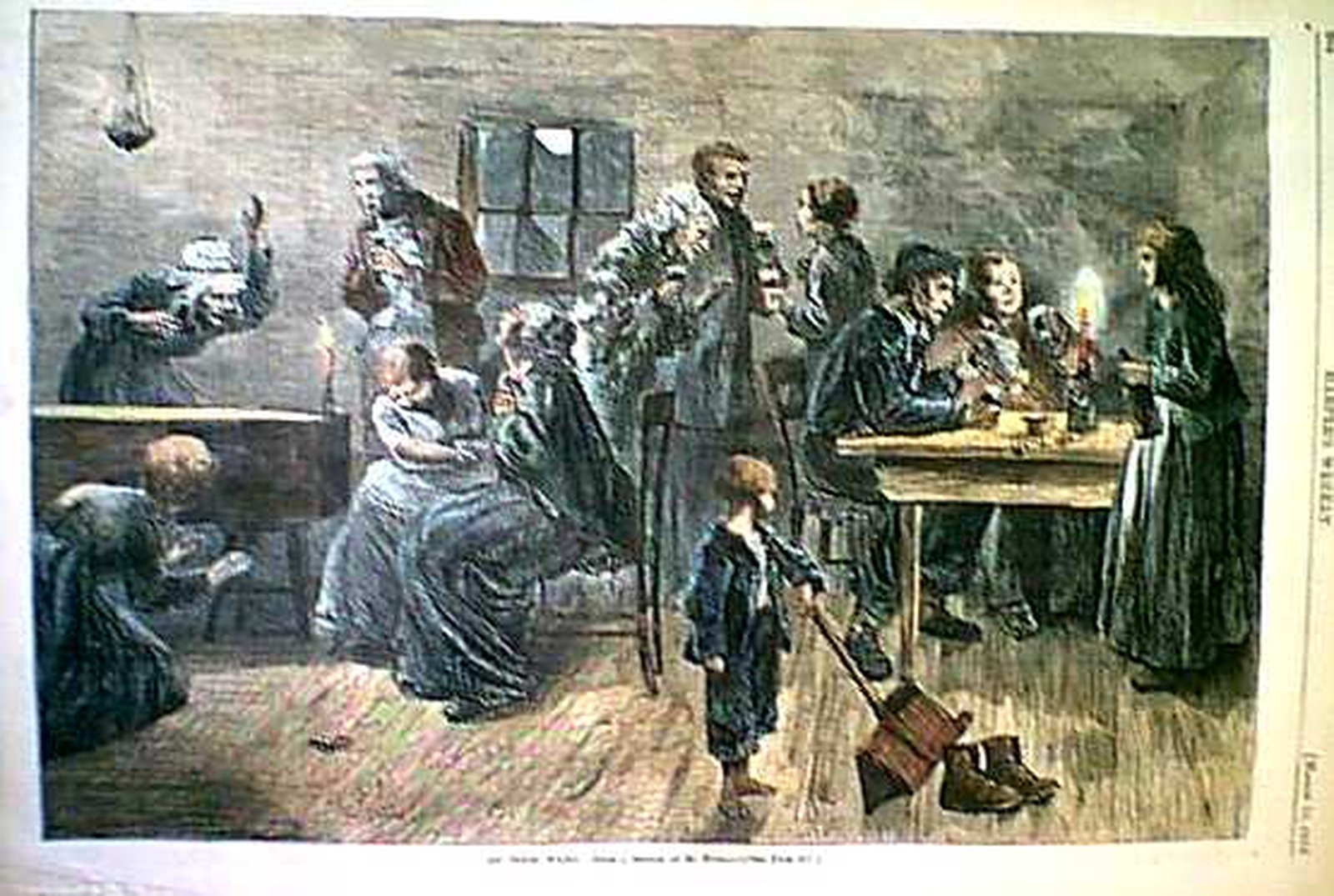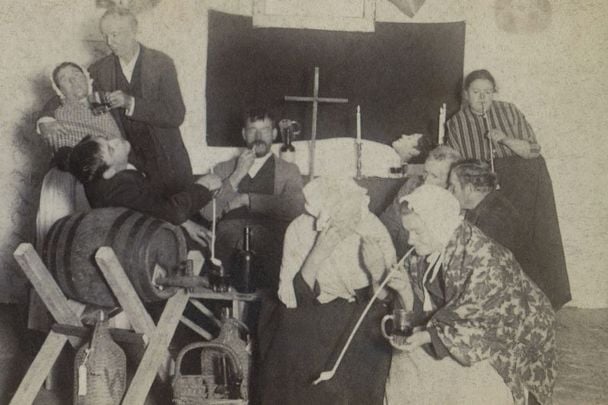From Irish Central:
Irish wakes are anything but a somber affair. Merrymaking was a common part of the traditional Irish wake and a major part of the grieving process in Ireland. A pagan ritual was the root of much of the goings-on at an Irish wake and much of the carrying-on was frowned upon by the church. Storytelling, mischief-making, and games were all part of the send-off in an attempt to ease the suffering of the deceased's family. The wake custom most likely has its roots in the ancient Jewish custom of leaving the burial chamber unsealed for three days with relatives returning during that time to check for any signs of life.
There is a myth that the tradition first came to Ireland as a result of the frequent lead poisoning suffered by drinkers of stout from pewter tankards. As this lead poisoning often left drinkers in a catatonic state resembling death—á la the Father Ted episode in which Father Jack is thought to have met his maker—the mourners were required to keep a watchful eye on the body in case they'd made a terrible mistake. Whatever the true story behind its beginning, the wake gives family and friends one last opportunity to remember the life of the person they've lost before the burial, an attempt to offer some kind of solace in the face of their loss. As in other Celtic countries, Irish mourners adopted the custom as a way to keep vigil over their dead until the time of burial, and it evolved into an occasion mixed with both sadness and merriment. (Read more.)
From Ireland Reaching Out:
ShareThe wake started right after death occurred, with the “laying out” of the corpse – preparing and exposing the corpse for public view in the family house – which was provided by non-professional carers: almost exclusively women of the village, helping hands who would gather around the family of the deceased at such critical moment. After the corpse was washed it would be covered in white linen with black ribbons covering the rims.
As the corpse was laid out, the keening of the dead could finally take place, once the night had set in. The keening, or Caoineadh, was a ritual lament performed by “professional” keeners, depositaries of the oral tradition to which the lament belonged. It was the great pagan goddess Brigid that is said to have introduced the custom of keening, following her own son's death. The cry marked the start of the wake, intensifying then at each crucial moment of the ceremony. Keeners would raise their lament
- when a new person arrived at the wake house
- when the corpse was placed in the coffin,
- when the funeral cortege headed for the graveyard and, finally,
- at the moment of burial.
The lament was also performed at intervals between the wake house and the graveyard. Similarly, to the laying out of the corpse, the keening was a prerogative of women. They were given food and alcohol for their services. (Read more.)



















No comments:
Post a Comment